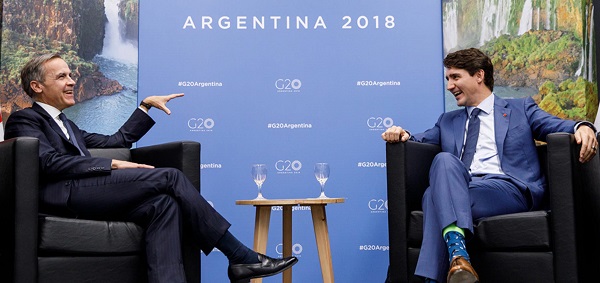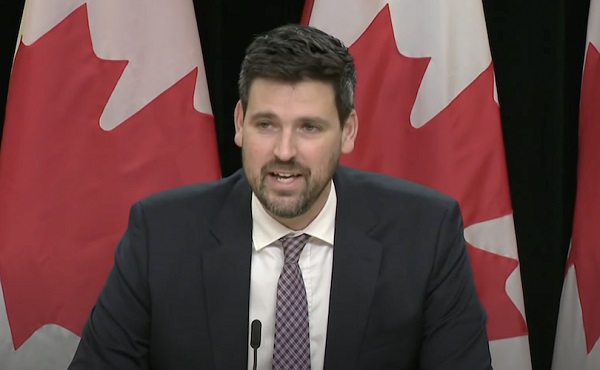International
Trump to host pivotal Alaska summit with Putin next week
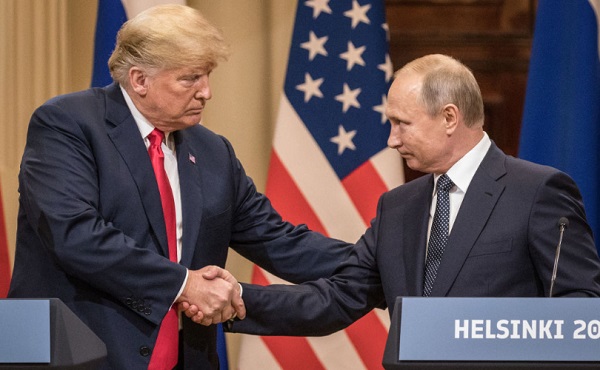
Quick Hit:
President Donald Trump announced Thursday that he will meet Russian President Vladimir Putin in Alaska next Friday, August 15. The announcement follows months of backchannel talks aimed at ending the war in Ukraine, including a recent meeting between Trump’s special envoy and Putin in Moscow that the White House called “highly productive.”
Key Details:
- In a Truth Social post Thursday, Trump wrote: “The highly anticipated meeting between myself, as President of the United States of America, and President Vladimir Putin, of Russia, will take place next Friday, August 15, 2025, in the Great State of Alaska. Further details to follow.”
- CBS News reported that planning for the meeting remains “fluid,” with a senior White House official noting Ukrainian President Volodymyr Zelensky could “end up being involved in some way.”
- Kremlin aide Yury Ushakov confirmed Thursday that a venue had been agreed upon after U.S. Special Envoy to the Middle East Steve Witkoff met with Putin in Moscow.
Diving Deeper:
President Donald Trump confirmed Thursday that he will meet face-to-face with Russian President Vladimir Putin in Alaska next week, setting the stage for high-stakes talks on the ongoing war in Ukraine.
“The highly anticipated meeting between myself, as President of the United States of America, and President Vladimir Putin, of Russia, will take place next Friday, August 15, 2025, in the Great State of Alaska,” Trump wrote on Truth Social. “Further details to follow. Thank you for your attention to this matter!”
CBS News, citing multiple sources familiar with the planning, reported that the meeting is still being finalized and could potentially include Ukrainian President Volodymyr Zelensky. The network quoted a senior White House official describing the arrangements as “fluid.”
The Kremlin confirmed that a venue for the talks has been locked in. Top aide Yury Ushakov announced the agreement Thursday, following what Trump described as “highly productive” discussions in Moscow the previous day. Those discussions were led by U.S. Special Envoy to the Middle East Steve Witkoff, who met directly with Putin.
The White House characterized Witkoff’s mission as a last-bid attempt to push forward negotiations that have dragged on for months without significant breakthroughs. While American and Russian officials have met repeatedly this year, U.S. officials acknowledge that Russia’s resistance to concessions has tested Trump’s patience, shifting his stance from early optimism to visible frustration and warnings of consequences.
In a statement to Breitbart News after Witkoff’s trip, White House press secretary Karoline Leavitt said, “As President Trump said earlier today on TRUTH Social, great progress was made during Special Envoy Witkoff’s meeting with President Putin. The Russians expressed their desire to meet with President Trump, and the President is open to meeting with both President Putin and President Zelensky.”
The Alaska meeting—if all sides agree on final terms—would mark the first in-person sit-down between Trump and Putin since Trump returned to the White House in January.
Business
UN, Gates Foundation push for digital ID across 50 nations by 2028

From LifeSiteNews
With 30 nations enrolled, the UN and Gates Foundation’s digital ID campaign signals accelerating efforts to create a global digital infrastructure that centralizes identity and data.
The 50-in-5 campaign to accelerate digital ID, fast payment systems, and data exchanges in 50 countries by 2028 reaches a 30 country milestone.
Launched in November 2023, the 50-in-5 campaign is a joint effort of the United Nations, the Bill and Melinda Gates Foundation, and their partners to rollout out at least one component of Digital Public Infrastructure (DPI) in 50 nations within five years.
DPI is a civic technology stack consisting of three major components: digital ID, fast payment systems, and massive data sharing between public and private entities.
30 countries have now joined the UN/Gates 50-in-5 DPI campaign to rollout Digital ID, Fast Payment Systems & Massive Data Exchanges between public & private entities https://t.co/dOYCfQHObt pic.twitter.com/yP6V7zxnUD
— Tim Hinchliffe (@TimHinchliffe) October 2, 2025
50-in-5 started with 11 first-mover countries, and with the count now at 30 the participating countries include:
Bangladesh, Brazil, Cambodia, Dominican Republic, Estonia, Ethiopia, France, Guatemala, Jamaica, Kazakhstan, Lesotho, Malawi, Mexico, Moldova, Nigeria, Norway, Senegal, Sierra Leone, Singapore, Sri Lanka, South Africa, South Sudan, Somalia, Togo, Trinidad and Tobago, Uganda, Ukraine, Uruguay, Uzbekistan, and Zambia.
The 50-in-5 campaign celebrated its 30-country milestone during a sideline event at the U.N. General Assembly in New York on September 22.
There, government officials, like Ukraine’s deputy prime minister, praised the work of 50-in-5 while the ministers of digital economy from Nigeria and Togo called for an interoperable digital identity system for the entire African continent.
Nigeria’s Minister of Communications, Innovation and Digital Economy Bosun Tijani said that each country could build their own digital identity scheme, but that they should all be interoperable with one another – demonstrating both the digital ID and data sharing as good potential use cases for DPI.
“Nations want to maintain their own ID databases, but I think we have a unique opportunity to apply strong data exchange system interoperability,” said Tijani.
“I think a digital identity system that can go with you wherever you are going on the African continent would be a fantastic example,” he added.
Nigeria's minister of Communications, Innovation & Digital Economy Bosun Tijani calls for Digital ID to be interoperable across all Africa: "A digital identity system that can go with you wherever you go on the African continent will be fantastic." 50-in-5 https://t.co/dOYCfQHObt pic.twitter.com/KB380uQrmd
— Tim Hinchliffe (@TimHinchliffe) October 2, 2025
In March 2025, the Nigerian government published a framework to develop national Digital Public Infrastructure that would leverage digital ID to track and trace “key life events” of every citizen from the cradle to the grave.
“Throughout a citizen’s life, from birth to old age, there are marked moments of significant life events requiring support or service from the government,” the paper begins.
“Some of these services include registration of births, antenatal healthcare, vaccines, school enrollment, scholarships, health insurance for business registrations, filing of taxes, etc.”
These “life events” require every citizen to have a digital ID:
The Federal Government of Nigeria is on a mission to appropriately deploy digital technology to support Nigerians through these significant and profound moments so they can integrate into the state and enjoy the benefits of citizenhood from cradle to old age.

Back at the 50-in-5 milestone event, Togo’s Minister of Digital Economy and Transformation Cina Lawson called for a free, cross-border, interoperable digital ID powered by the Modular Open Source Identity Platform (MOSIP).
MOSIP is a Gates-funded platform that “helps govts & other user organizations implement a digital, foundational identity system.”
Said Lawson, “We’ve initiated conversations with our neighbors, namely Benin, to have interoperability of our ID systems, but also Burkina Faso and other countries such as Senegal, because we’re using MOSIP platform, so what we do is that we host meetings of countries that are interested the platform, so that we could see how we [are] operating it and so on.”
“Our ID system, using the MOSIP platform, is really the ID that the majority of the Togolese will have because first of all it’s free, it doesn’t require to show proof of citizenship, and so on, so that is the ID card of the poorest of the Togolese,” she added.
Togo’s Minister of Digital Economy & Transformation Cina Lawson calls for free, cross-border, interoperable Digital ID using Gates-funded MOSIP platform. UN/Gates 50-in-5 event https://t.co/dOYCfQHObt pic.twitter.com/wPC4vpms9l
— Tim Hinchliffe (@TimHinchliffe) October 2, 2025
Lawson also spoke at the 50-in-5 launch event in November 2023, where she explained that Togo’s DPI journey began with the arrival of COVID-19.
First, the government set up a digital payments system within 10 days.
“We deployed it, and we were able to pay out 25 percent of all Togolese adults, and we distributed $34 million that the most vulnerable Togolese received directly through their mobile phones,” said Lawson.
Then, came vaccine passports.
“We created a digital COVID certificate. All of a sudden, the fight against the pandemic became really about using digital tools to be more effective,” she added at the time.
Today, Togo became the first sub-Saharan African country whose digital COVID-19 vaccination certificate is recognized by the @eu_commission. Travelers with a Togolese certificate will be able to validly present it in the EU & vice versa. @AmbUETogo @KoenDoens pic.twitter.com/Uy9mRF8bkU
— Cina Lawson (@cinalawson) November 24, 2021
To get an idea where DPI is heading, Ukraine’s Deputy Prime Minister Myhailo Fedorov gave a pre-recorded speech for the 50-in-5 milestone event, saying that his country was successful in building “the state in a smartphone” via the DIIA app, which had reached 23 million users.
“For every citizen, government should be simple, convenient, nearly invisible, and accessible in just a few clicks,” said Fedorov.
“Today, 23 million people use the DIIA app […] Since the launch of DIIA in 2020, Ukrainians and the state have saved about $4.5 billion to date.”
“This is the combined anti-corruption and economic effect of digitalizing services.”
“For us, it’s powerful proof of DIIA’s efficiency and the real impact of building a digital state,” he added.
Ukraine Deputy PM Mykhailo Fedorov praises DIIA Digital ID app, with 23M users, for being a "STATE IN A SMARTPHONE" & "BUILDING AN (INVISIBLE) DIGITAL STATE." An "ANTI-CORRUPTION/ECONOMIC EFFECT OF DIGITALIZING SERVICES." Includes "ONLINE MARRIAGE" 50-in-5 https://t.co/dOYCfQHObt pic.twitter.com/MUFwbW4Yyy
— Tim Hinchliffe (@TimHinchliffe) October 3, 2025
Speaking at the World Economic Forum (WEF) Global Technology Governance Summit on April 7, 2021, Fedorov told the panelists of the “Scaling Up Digital Identity Systems” session, that it was Ukraine’s goal to “enable all life situations with this digital ID.”
“The pandemic has accelerated our progress […] People have no choice but to trust technology,” Fedorov said at the time.
“We have to make a product that is so convenient that a person will be able to disrupt their stereotypes, to break through from their fears, and start using a government-made application,” he added.
The 50-in-5 campaign is a collaboration between the Bill and Melinda Gates Foundation, the United Nations Development Program, the Digital Public Goods Alliance, the Center for Digital Public Infrastructure, and Co-Develop; with support from GovStack, the Inter-American Development Bank, and UNICEF.
The Center for Digital Public Infrastructure is backed by Co-Develop and Nilekani Philanthropies.
Nandan Nilekani is one of the architects of India’s digital identity system, Aadhaar.
Co-Develop was founded by The Rockefeller Foundation, the Bill & Melinda Gates Foundation, Nilekani Philanthropies, and the Omidyar Network.
The Omidyar Network is a funder of MOSIP.
The Digital Public Goods Alliance lists both the Gates and Rockefeller foundations in its roadmap showcasing “activities that advance digital public goods,” along with other organizations and several governments.
At last year’s Summit of the Future, 193 nations agreed to the non-binding “Pact for the Future,” which dedicates a section in its annex, the “Global Digital Compact,” to implement DPI in member states.
One year later, the U.K. announced it was going to force Britons into mandatory digital ID schemes under the guise of combatting illegal immigration.
Reprinted with permission from The Sociable.
International
Hamas releases all living hostages under Trump peace plan

Quick Hit:
All 20 surviving Israeli hostages were freed by Hamas on Monday under President Trump’s peace plan, returning to Israel after more than two years in captivity. The exchange, part of Trump’s 20-point peace plan, marks the official end of the Gaza war.
Key Details:
- The first seven hostages were released around 2:30 a.m. ET Monday, with the remaining 13 freed hours later. All 20 were reportedly able to walk to Red Cross vehicles without assistance.
- Families were reunited through emotional video calls after 738 days apart. Among those freed were twin brothers Gali and Ziv Berman, who had been separated in captivity.
- The bodies of 28 deceased hostages are expected to be transferred to Israel in the coming days, while nearly 2,000 Palestinian prisoners will be released as part of the exchange.
Watch the moments that Rom Broslavski, Nimrod Cohen, and Eitan Horn were welcomed back home into Israel by the IDF 🇮🇱 pic.twitter.com/panFrDZfoI
— Israel Defense Forces (@IDF) October 13, 2025
Tears of joy. pic.twitter.com/vb7tGZqAY9
— Israel Defense Forces (@IDF) October 13, 2025
Diving Deeper:
All surviving Israeli hostages held by Hamas in Gaza were released Monday following the implementation of President Donald Trump’s cease-fire agreement — a sweeping deal that has brought an end to the war and set in motion plans for Hamas’ disarmament.
The International Committee of the Red Cross oversaw the transfer of all 20 living hostages, who emerged from Gaza under their own power and were handed over to Israeli forces before being transported to hospitals for medical evaluation. Emotional scenes followed as families connected with their loved ones for the first time in more than two years. In one particularly poignant moment, twin brothers Gali and Ziv Berman — who had been held separately since October 2023 — embraced in a tearful reunion.
The exchange also includes the return of 28 bodies still held by Hamas. Their repatriation will take place in stages throughout the week, according to Israeli officials. The release fulfills a major milestone in Trump’s 20-point Gaza peace plan, which was brokered with the support of Egypt, Qatar, and Jordan. The agreement requires Hamas to surrender its remaining weapons, disband its militant wings, and cede control of Gaza to an international transitional authority.
The hostage crisis began during the October 7, 2023, terror attacks on southern Israel, when Hamas militants stormed across the border, kidnapping more than 250 civilians. Survivors of earlier exchanges described brutal conditions in captivity, including torture, starvation, and psychological abuse. Some hostages were executed when Israeli troops approached Hamas strongholds, including six victims shot at point-blank range last September.
The war left much of Gaza in ruins, with Israeli operations dismantling Hamas’s tunnel networks and command infrastructure. According to the Hamas-run Gaza Health Ministry, more than 67,000 Palestinians were killed — a figure that does not distinguish between militants and civilians.
Trump’s cease-fire framework, announced last week, called for a complete Israeli withdrawal from most of Gaza, an end to rocket fire, and an international effort to oversee the territory’s reconstruction. In return, Israel secured the unconditional release of all living hostages and the recovery of the dead. The plan’s next phase will focus on humanitarian coordination, economic stabilization, and the eventual formation of a demilitarized Palestinian administration.
For the families of those held captive, it marks the end of a long nightmare — and, as many said Monday, the start of long-awaited healing.
-

 Media2 days ago
Media2 days agoResponse to any budget sleight of hand will determine which audience media have decided to serve
-

 Frontier Centre for Public Policy1 day ago
Frontier Centre for Public Policy1 day agoCanada’s Democracy Is Running On Fumes
-

 Education1 day ago
Education1 day agoClassroom Size Isn’t The Real Issue
-
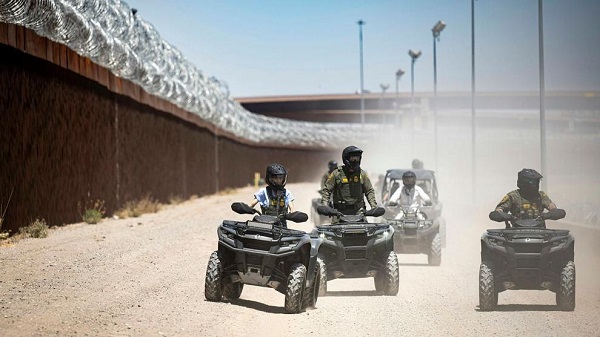
 illegal immigration1 day ago
illegal immigration1 day ago$4.5B awarded in new contracts to build Smart Wall along southwest border
-
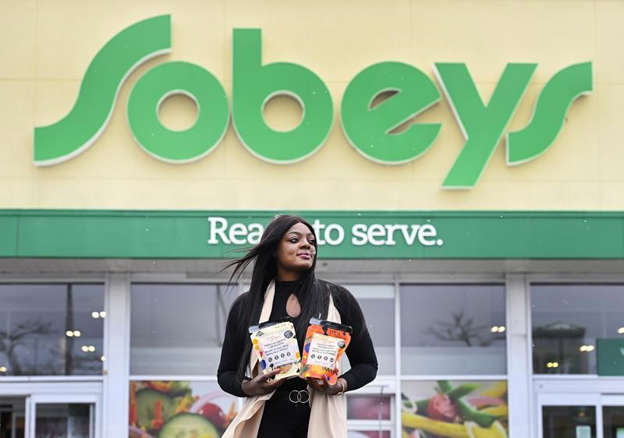
 Business2 days ago
Business2 days agoYour $350 Grocery Question: Gouging or Economics?
-
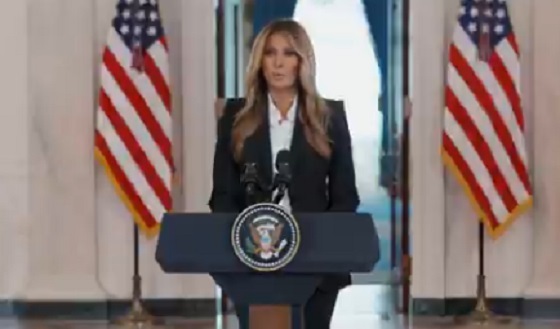
 International1 day ago
International1 day agoMelania Trump quietly reunites children divided by Ukraine war
-

 Business13 hours ago
Business13 hours agoTruckers see pay surge as ICE sweeps illegal drivers off U.S. highways
-
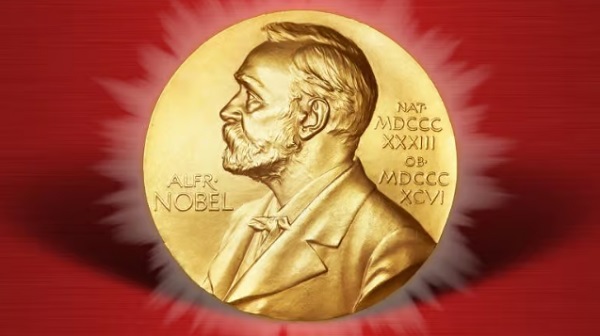
 Brownstone Institute12 hours ago
Brownstone Institute12 hours agoTrump Covets the Nobel Peace Prize


